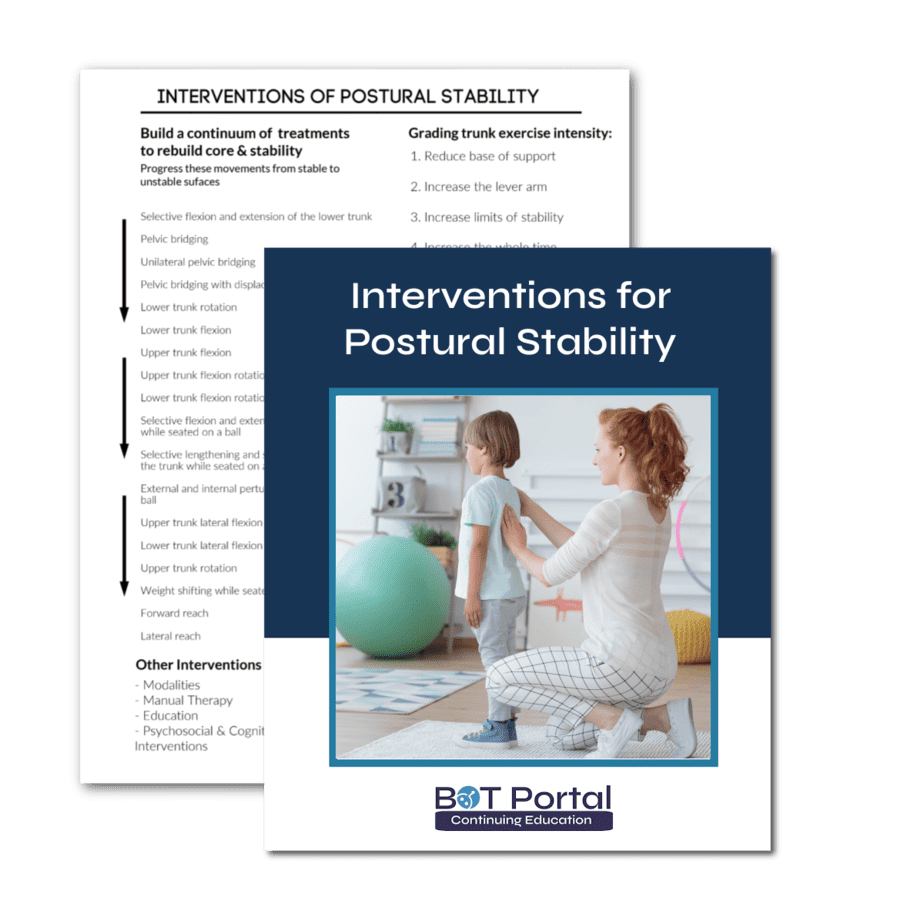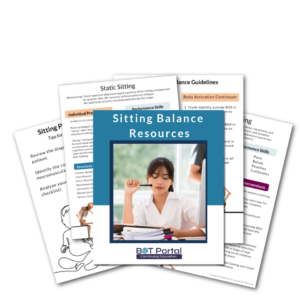Description
Postural Stability Intervention Ideas
Note: These postural stability intervention ideas are meant to inform daily practice. Many research-supported intervention trajectories are shown to promote remediation, and everyone is different! Do your research! This is merely a tool in your toolkit. 🙂
In occupational therapy, educating individuals on interventions for postural stability is crucial for optimizing occupational performance and promoting overall well-being. Postural stability plays a significant role in daily activities, influencing balance, coordination, and functional mobility during tasks such as sitting, standing, and moving. By understanding the importance of stability and implementing targeted interventions, individuals can improve their ability to maintain a stable posture and engage in activities safely, comfortably, and effectively.
The single-page resource illustrating interventions for stability provides a valuable tool for occupational therapy practitioners and their clients. It features a list of stability exercises and techniques specifically aimed at enhancing postural stability. These interventions include selective flexion and extension of the lower trunk, pelvic bridging, unilateral pelvic bridging, lower trunk rotation, upper trunk flexion, and weight shifting while seated on a ball, among others. These exercises are designed to strengthen core muscles, improve postural control, and promote stability in various positions and activities.
Occupational therapy emphasizes the importance of stability interventions in occupational performance, as poor postural stability can lead to increased fall risk, decreased mobility, and limited participation in daily activities. By providing education on postural stability exercises and facilitating hands-on practice, occupational therapists empower individuals to strengthen their core muscles, improve balance, and enhance functional capacity for tasks such as reaching, bending, and shifting weight.
Ultimately, educating individuals on interventions for stability enables them to take proactive steps to enhance their musculoskeletal health and functional independence. Through targeted interventions, personalized guidance, and ongoing support, occupational therapy empowers individuals to build postural stability, reduce the risk of injury, and optimize their overall well-being during daily activities and tasks. By utilizing resources such as the stability interventions checklist, individuals can improve their postural stability, increase their confidence, and maintain optimal occupational performance throughout their lifespan.
Other helpful links:
Check out BOT Portal: Resource Site for Occupational Therapy Students and Practitioners




